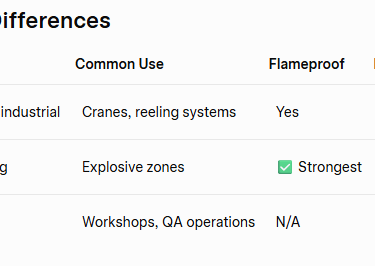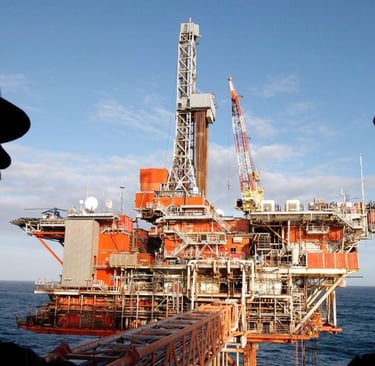📞+86 153 7530 2641 📧 hongjing.Wang@feichuncables.com

Decoding AS/NZS 2802, 1802 & 1747: Which Cable Standard Best Fits Port and Industrial Applications?
Discover the core differences between AS/NZS 2802, 1802, and 1747 standards for reeling and trailing cables. Learn their ideal applications—from underground coal mining to port crane operations—and find out which is best suited for port environments. Tailored for Australian industry professionals seeking compliance and safety in cable selection.
hongjing.Wang@Feichun
7/7/20256 min read
Key Points
AS/NZS 2802 is likely the best fit for most port applications due to its focus on high mechanical strength and flexibility for dynamic reeling systems.
AS/NZS 1802 is designed for underground coal mining and may only apply in ports with explosion risks, such as petrochemical zones.
AS/NZS 1747 supports maintenance and testing, ensuring cable safety and compliance in port operations.
Choosing the right standard depends on specific port conditions, with AS/NZS 2802 being the most versatile for general use.
Understanding Cable Standards
In Australia’s demanding port and industrial environments, selecting the appropriate cable standard is crucial for ensuring safety, reliability, and compliance. Ports require cables that can handle constant movement, harsh weather, and heavy mechanical stress. The AS/NZS 2802, 1802, and 1747 standards provide guidelines to meet these challenges, each tailored to specific applications.
Why AS/NZS 2802 for Ports?
AS/NZS 2802 is designed for reeling and trailing cables used in surface mining and general industrial settings, making it highly suitable for port operations like cranes and automated systems. Its robust design ensures durability in dynamic environments.
When to Consider AS/NZS 1802
AS/NZS 1802 is tailored for underground coal mining, with features like flameproof construction for explosive atmospheres. It’s less common in ports but may be needed in areas with flammable gases.
Role of AS/NZS 1747
AS/NZS 1747 focuses on cable repair and testing, playing a vital role in maintaining cable integrity in ports. It ensures cables remain safe and compliant through regular inspections and repairs.




Comprehensive Guide to AS/NZS 2802, 1802, and 1747 for Port and Industrial Applications
Introduction: Why Standards Matter in Port and Heavy-Duty Applications
Ports and heavy-duty industrial environments in Australia demand robust cabling solutions to ensure operational efficiency, safety, and compliance with stringent regulations. These settings involve constant cable movement, exposure to harsh elements like seawater and UV radiation, and significant mechanical stress from equipment such as cranes and automated guided vehicles (AGVs). Selecting the correct cable standard is critical to prevent failures, reduce downtime, and meet regulatory requirements enforced by bodies like WorkSafe and the Department of Mines, Industry Regulation and Safety.
This article explores three key Australian and New Zealand standards—AS/NZS 2802, 1802, and 1747—focusing on their applications in port environments, which often require a hybrid of mining-grade durability and industrial flexibility. By understanding these standards, port operators, engineers, and procurement specialists can make informed decisions to enhance safety and performance.
AS/NZS 2802 – Reeling & Trailing Cables for Mining and General Use
AS/NZS 2802:2000, reconfirmed in 2020, specifies requirements for multicore elastomer-insulated and sheathed flexible reeling and trailing cables for surface mining, underground mining (excluding coal mining), and general industrial use. These cables support system voltages from 1.1/1.1 kV to 33/33 kV, making them versatile for various heavy-duty applications.
Key Features
High Mechanical Strength: Designed to withstand flattening, impact, tension, and torsion, ensuring durability in dynamic reeling systems.
Environmental Resistance: Resistant to oil, water, flame, and abrasion, suitable for harsh port conditions.
Flexibility: Supports continuous movement in applications like cranes and mobile machinery.
Cable Types: Includes Type 209, 210, 275, 240, 241, 245, 260, 409, 412, 440, 441, 450, and 455, covering a range of voltage ratings and constructions.
Typical Use Cases
Surface Mining: Powers equipment like excavators and haul trucks.
Port Operations: Used in Ship-to-Shore (STS) cranes, Rubber-Tyred Gantry (RTG) cranes, stacker-reclaimers, and shiploaders.
Automation Systems: Supports AGVs and intelligent container systems in ports.
AS/NZS 2802 is the most commonly used standard in port environments due to its compatibility with high-movement, heavy-duty systems. Its robust construction ensures reliability in the dynamic and corrosive conditions typical of ports.
Source: Standards Australia - AS/NZS 2802:2000
AS/NZS 1802 – For Underground Coal Mining Applications
AS/NZS 1802:2018 is tailored for reeling and trailing cables used in underground coal mining, where explosive atmospheres pose significant risks. This standard ensures cables are safe in environments with methane and other flammable gases, incorporating features like earth fault screens and limited sheath thickness (maximum 9.0 mm) to accommodate larger cables.
AS/NZS 1747 – Cable Repair, Testing, and Accessory Fitting
AS/NZS 1747:2022 outlines requirements for the repair, testing, and fitting of accessories for reeling, trailing, and feeder cables used in mining and general industrial applications. This standard ensures cables remain safe and compliant throughout their lifecycle, particularly in demanding environments like ports.
Key Features
Testing Methods: Includes insulation resistance, continuity, and other electrical tests to verify cable integrity.
Repair Guidelines: Provides procedures for safe and effective cable repairs.
Accessory Fitting: Ensures plugs, connectors, and other accessories are fitted correctly to maintain safety.
Typical Use Cases
Mining Maintenance: Regular testing and repair of cables in mines.
Port Workshops: Used by inspection teams to maintain cable safety in port equipment like cranes and AGVs.
In ports, AS/NZS 1747 supports quality assurance by ensuring cables are regularly tested and repaired, extending their operational life and maintaining compliance.
Source: Standards New Zealand - AS/NZS 1747:2022
Port Applications: Which Standard Is the Best Fit?
Port environments are unique, combining the mechanical demands of mining with the need for flexibility in industrial automation. The choice of cable standard depends on specific operational conditions:
AS/NZS 2802: The preferred standard for most port applications due to its design for high-movement, heavy-duty systems. It is ideal for STS cranes, RTG cranes, AGVs, and automated reeling systems, which require cables to withstand constant flexing and environmental exposure. For example, in a busy port like Fremantle, AS/NZS 2802 cables power cranes handling thousands of containers daily, ensuring reliability and safety.
AS/NZS 1802: Relevant only in port areas with explosion risks, such as zones handling petrochemicals or liquefied natural gas (LNG). These areas are limited, and most port operations do not require the flameproof and anti-static features of AS/NZS 1802 cables.
AS/NZS 1747: Plays a critical supportive role in port maintenance. Regular testing and repair, as outlined in AS/NZS 1747, ensure cables remain safe and compliant, reducing the risk of failures that could disrupt port operations.


Questions and Answers on Potential Cable Problems
Q1: What are the common cable failures in port environments, and how do these standards address them?
A: Common failures include mechanical damage from reeling, chemical exposure, and electrical faults. AS/NZS 2802 ensures cables have high mechanical strength and environmental resistance, while AS/NZS 1747 provides guidelines for testing and repair to address these issues promptly.
Q2: Can cables certified to AS/NZS 2802 be used in underground mining?
A: AS/NZS 2802 cables are designed for surface mining and general use, not specifically for underground coal mining. For underground coal mining, AS/NZS 1802 is required due to its flameproof and anti-static features.
Q3: How often should cables in port environments be tested according to AS/NZS 1747?
A: Testing frequency depends on usage and conditions, but AS/NZS 1747 recommends regular inspections, typically aligned with maintenance schedules, to ensure cable safety and compliance.
Q4: Are hybrid cables combining power and data transmission suitable for ports?
A: Hybrid cables, like those integrating power and fiber optics, can be beneficial for port applications requiring simultaneous power and data transmission. Their compliance with AS/NZS 2802 should be verified through type testing.
Q5: What factors should port operators consider when selecting cables?
A: Key factors include mechanical strength, flexibility, environmental resistance, voltage rating, and compliance with standards like AS/NZS 2802. Operators should also consider maintenance requirements outlined in AS/NZS 1747.
Conclusion: Choosing the Right Standard for Port Infrastructure
For most port applications, AS/NZS 2802 is the most suitable standard due to its focus on high mechanical strength and flexibility, making it ideal for dynamic systems like cranes and AGVs. AS/NZS 1747 complements this by ensuring cables are maintained and tested to remain safe and compliant. While AS/NZS 1802 is critical for underground coal mining, its use in ports is limited to areas with explosion risks.
Port project managers should work with compliant suppliers and ensure cables are certified to the appropriate standards. Regular maintenance, guided by AS/NZS 1747, is essential to extend cable life and prevent failures. By aligning cable selection with operational needs and regulatory requirements, ports can achieve safer, more efficient operations.


How to Reach Us
Get in Touch
SiteMap
Product Catalogue
Reeling Cable
Festoon Cable
Shore Power Cable




Scan to add us on WeChat
